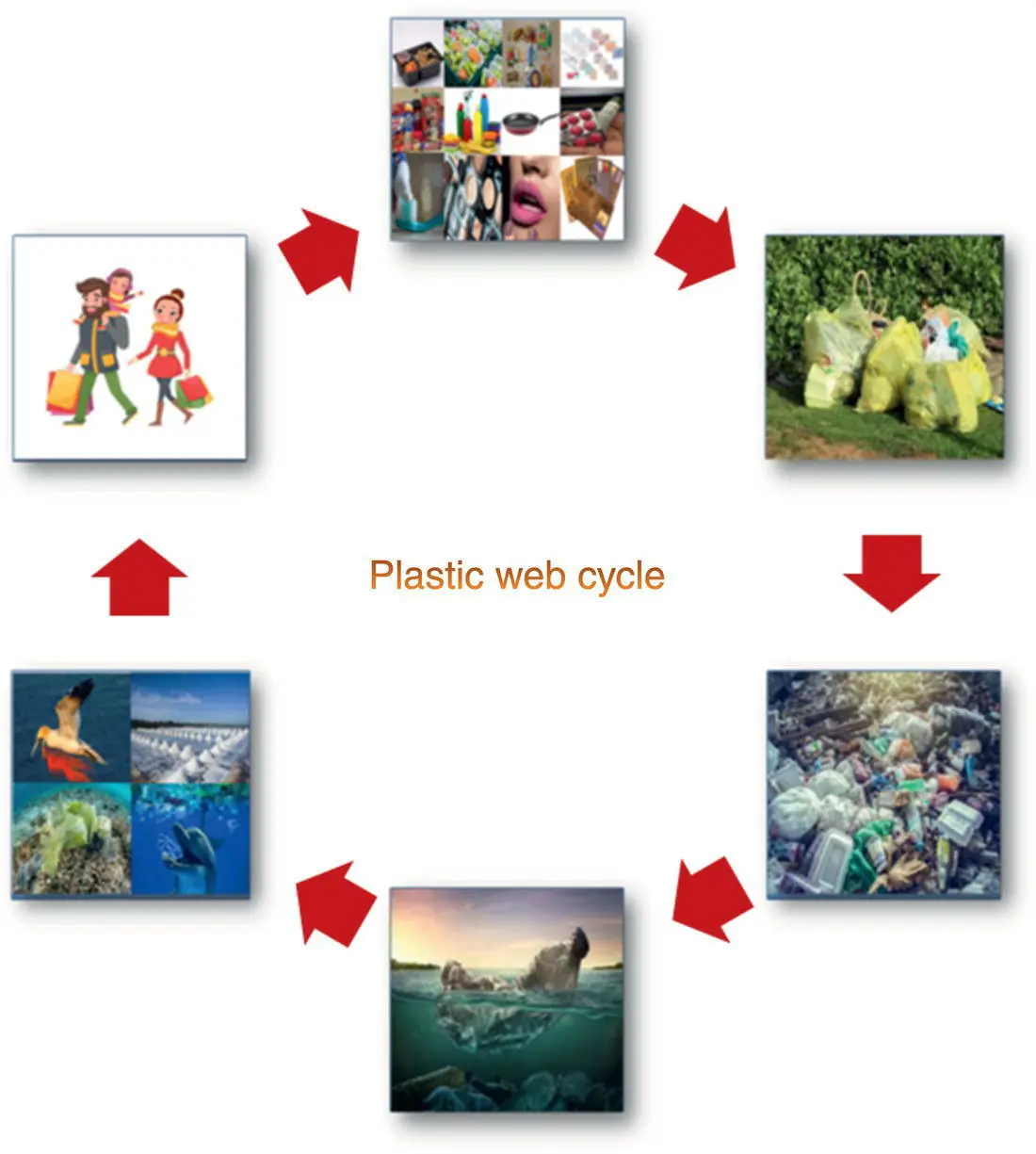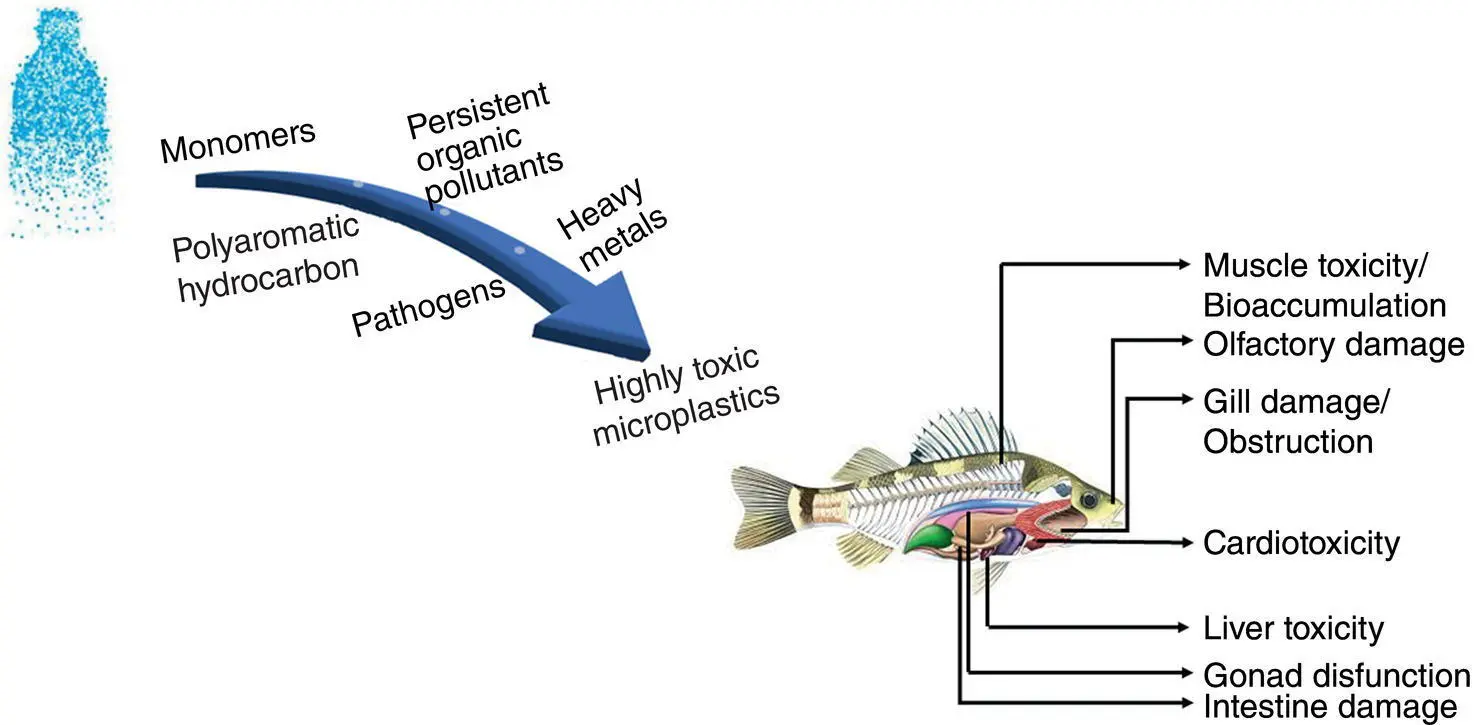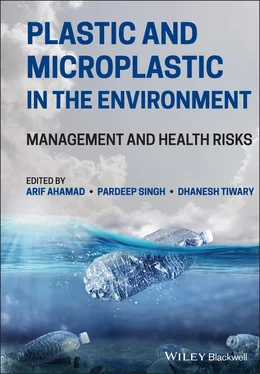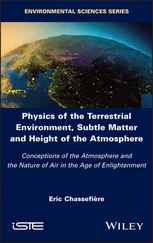Plastic and Microplastic in the Environment
Здесь есть возможность читать онлайн «Plastic and Microplastic in the Environment» — ознакомительный отрывок электронной книги совершенно бесплатно, а после прочтения отрывка купить полную версию. В некоторых случаях можно слушать аудио, скачать через торрент в формате fb2 и присутствует краткое содержание. Жанр: unrecognised, на английском языке. Описание произведения, (предисловие) а так же отзывы посетителей доступны на портале библиотеки ЛибКат.
- Название:Plastic and Microplastic in the Environment
- Автор:
- Жанр:
- Год:неизвестен
- ISBN:нет данных
- Рейтинг книги:5 / 5. Голосов: 1
-
Избранное:Добавить в избранное
- Отзывы:
-
Ваша оценка:
- 100
- 1
- 2
- 3
- 4
- 5
Plastic and Microplastic in the Environment: краткое содержание, описание и аннотация
Предлагаем к чтению аннотацию, описание, краткое содержание или предисловие (зависит от того, что написал сам автор книги «Plastic and Microplastic in the Environment»). Если вы не нашли необходимую информацию о книге — напишите в комментариях, мы постараемся отыскать её.
Thought-provoking discussions of the challenges posed by—and potential solutions to—plastic and microplastic pollution Plastic and Microplastic in the Environment: Management and Health Risks,
Plastic and Microplastic in the Environment
Plastic and Microplastic in the Environment: Management and Health Risks
Plastic and Microplastic in the Environment — читать онлайн ознакомительный отрывок
Ниже представлен текст книги, разбитый по страницам. Система сохранения места последней прочитанной страницы, позволяет с удобством читать онлайн бесплатно книгу «Plastic and Microplastic in the Environment», без необходимости каждый раз заново искать на чём Вы остановились. Поставьте закладку, и сможете в любой момент перейти на страницу, на которой закончили чтение.
Интервал:
Закладка:
Sea birds feed upon fishes. Sometimes they take contaminated fishes with MPs accumulated in them. Sea birds like Albatross and Shearwater feed on the ocean surface and in that way, they take in a huge amount of floating MPs inside their gastrointestinal tract. Ryan (2008) found the presence of MPs in south Atlantic birds. These MPs have many negative impacts on their bodies, including starvation due to lack of hunger caused by MPs accumulated in their gastro‐intestinal tract, and blockage of respiratory organs like gills leading to suffocation and ultimately death. The sediment water interface is the main hub of these artificial polymers due to sinking and sedimentation. MPs have lower density than the oceanic water; however due to biofouling (deposition and colonization of microorganisms on any surface exposed to them in water) by microorganism they settle down. Biofouling increases the density of MP and make it more dense than the oceanic water, although this may take up to a week, a month, or more than year (Fazey & Ryan 2016). These phenomena are highly surface area‐to‐volume ratio dependent, as smaller fragments have more surface area‐to‐volume ratio than the larger debris (Kowalski et al. 2016). Therefore, smaller sized particles lose their bounce earlier and settle in benthic environments. The fecal matter of zooplanktons also contain MP pellets; they ingest the MPs and are unable to digest to any further, simpler form of nutrition, so what is ingested is excreted. These also settle to the bottom. MPs in fecal materials speed up its sinking rate in the water column (Cole et al. 2016). These are then bioavailable to the benthos and become the part of benthic food system.
Table 3.1 The occurrence of MPs in marine organisms reported in some studies.
| Marine organisms contaminated with MPs | Sampling location | Occurrence of MPs | Specific detail | References |
|---|---|---|---|---|
| Caretta caretta (54 sea turtle samples) | Adriatic Sea | 35% | Fatality seen in juvenile turtle due to debris ingestion | Lazar & Gračan (2011) |
| Lampris sp. (595 samples) | North Pacific | 19% | Highest debris ingestion seen in mesopelagic (rarely comes in contact with surface water) | Choy & Drazen (2013) |
| Mesoplodon mirus | North and west coasts of Ireland | 85% | MPs detected throughout the digestive tracts | Lusher et al. (2015) |
| 26 different fish species (178 individuals sampled) | Saudi Arabian Red Sea coast | 15% | Highest contamination was found in Parascolopsis eriomma species which feed on benthic organisms | Baalkhuyur et al. (2018) |
| Oysters | China coast | 84% | Average conc. of MPs: 0.62 items/g (wet weight) or 2.93 items/individual | Teng et al. (2019) |
| 150 analyzed fish (50 per species) | Northeast Atlantic Ocean | 49% | Lipid oxidative damage found in gills and muscle which cause neurotoxicity | Barboza et al. (2020) |
| European Sardine | Northwestern Mediterranean Sea | 58% | Positive relation between MPs and parasite ingestion | Pennino et al. (2020) |
| Anchovies (45 samples) | Madura Strait, Indonesia | 335 plastic particles: 63% fibers, 34% fragments | 2.98% of total MPs found in all anchovy samples | Guntur et al. (2021) |
Other sea organisms like turtle, whale, seal, etc., are also at a high risk of MP accumulation and toxicity (Egbeocha et al. 2018). Whales have high lipid content in their body; therefore, they are more prone to accumulate MPs in their blabber, stomach, and intestines. Polar bears in the arctic region are also highly infected with MPs (Singh et al. 2020). Plastic debris reaching oceans from populated landmasses travels long distances along the water current and are distributed to every part of ocean over time, during which fragmentation of plastics also occurs, generating MPs, today their presence is reported in fish bodies in polar areas of the Arctic.
According to Food and Agriculture Organization (FAO, 2002) there are four pillars of food security (introduced in World Food Summit 1996); accessibility, availability, utilization, and stability. Although, due to the presence of MPs in every segment of our ecosystem, two pillars, i.e. food availability and utilization, are compromised in the case of marine food (De‐la‐Torre 2020). Organisms consume these MPs but their enzymatic actions are unable to break down the polymeric particles of the MPs, and this hinders the process of assimilation of other available nutrients. This causes starvation and lack of nutrition and ultimately leaves them undernourished. These organisms which are contaminated with MPs reach to humans in their food sources as those food sources are already nutrient deficient, so they are not sufficient for a human diet. Instead of nutrients, humans may meet with potential health threats due to MPs ( Figure 3.2).

Figure 3.2 Plastic web cycle: Plastic starting its journey from human and returning back to them.
Source: chaiyapruek/Adobe Stock.
3.1.4 Associated Risk
MPs can readily absorb harmful chemicals from the atmosphere and pathogenic contaminants due to its surface deposition (Verla et al. 2019). Along with their own harmful impacts, this MP has more associated risk when exposed to the environment, as they are breeding grounds for pathogens (Lu et al. 2019).
Plastic polymers are manufactured using chemical additives and other smaller monomer units, which give them the desired shape, structure, strength, and durability. These additives include wide ranges of chemicals like heavy metals; e.g. mercury, plasticizers, flame‐retardants, pigments, heat stabilizer filler, UV stabilizers, and many more, and this accounts for 4% of their total weight (Ambrogi et al. 2017). These chemicals tend to deposit over the MPs rather than dissolve in the water bodies (Ziccardi et al. 2016). When these chemicals leach into the environment due to photolysis chemical, and physical breakdown processes, they exhibit harmful impacts in every possible environment (air, water, or soil) as most of them are carcinogenic (Abdel‐Shafy and Mansour 2016). These MPs slowly degrade, and their surface area to volume ratio increases, which increases the chemical leaching (Chamas et al. 2020). These leached chemicals are mixed with the surrounding matrix and are transferred to the organism, causing bioaccumulation of these chemicals in them ( Figure 3.3). If these MPs are directly eaten by primary consumers like zooplankton and then become prey by high trophic level, there is a high chance of bioaccumulation (Ziccardi et al. 2016).

Figure 3.3 Associated chemical toxicants entering marine organisms have potential health impacts.
Fecal matter of zooplankton is an important component of marine organic matter and plays a significant role in the biological pump. The biological carbon pump is helpful in the transportation of carbon, nutrients, and energy to the deeper water sediments (Cisternas‐Novoa et al. 2019). Due to feeding on the MPs contaminated meals, their fecal pellets are highly susceptible to the persistent pollutants, hydrocarbons, and petroleum residue. Moreover, benthos feed upon these contaminated meals and are highly prone to bioaccumulation and biomagnification of these harmful chemicals.
Читать дальшеИнтервал:
Закладка:
Похожие книги на «Plastic and Microplastic in the Environment»
Представляем Вашему вниманию похожие книги на «Plastic and Microplastic in the Environment» списком для выбора. Мы отобрали схожую по названию и смыслу литературу в надежде предоставить читателям больше вариантов отыскать новые, интересные, ещё непрочитанные произведения.
Обсуждение, отзывы о книге «Plastic and Microplastic in the Environment» и просто собственные мнения читателей. Оставьте ваши комментарии, напишите, что Вы думаете о произведении, его смысле или главных героях. Укажите что конкретно понравилось, а что нет, и почему Вы так считаете.












